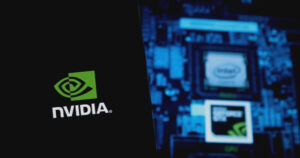EDF and NVIDIA: Powering Up Fluid Dynamics Simulations
By Darius Baruo | June 12, 2025, 10:41 AM
In an exciting development for the energy sector, Électricité de France (EDF), a powerhouse in electric utility, has teamed up with NVIDIA to revolutionize computational fluid dynamics (CFD) simulations. By harnessing the innovative capabilities of NVIDIA’s Nsight Profilers, EDF is set to significantly enhance the performance and efficiency of its simulations, which are crucial for the safety and longevity of power plants.

Streamlining GPU Porting: A Game Changer
Transitioning from traditional CPU applications to GPU environments is not just a trend; it’s a necessary evolution for solving large-scale problems at unprecedented speeds. Although this migration requires meticulous planning and effort, the rewards—such as enhanced throughput and operational efficiency—are monumental. EDF’s collaboration with NVIDIA focuses on utilizing tools like Nsight Systems and Nsight Compute, which provide critical insights into performance optimization and identify key areas for leveraging GPU acceleration.
Collaborative Innovations at EDF
In this exciting venture, EDF is not going solo. They are working closely with cloud giants AWS and Aneo to seamlessly port their legacy code_saturne application to modern NVIDIA GPUs. This progressive initiative demonstrates the synergy of power and technology, as the AWS Cloud plays a pivotal role in enhancing scalability and accessibility. By maintaining the modular architecture of code_saturne, the project underscores how NVIDIA platforms are uniquely equipped to handle the complexities of fluid dynamics simulations.
Deep-Dive: Analyzing and Optimizing Code
The process of transition involves careful analysis. Nsight Systems is a cornerstone in this effort, identifying bottlenecks and prioritizing code segments for optimal porting. The strategic use of CUDA managed memory ensures smooth data migration between CPU and GPU environments, maintaining low latency and high efficiency. Further, NVIDIA Tools Extension (NVTX) allows for granular tracking, enabling developers to fine-tune their porting efforts and maximize impact.
Visual representation is crucial. For instance, an Nsight Systems report not only reveals insights into simulation performance but also highlights the time-consuming routines demanding optimization, providing a roadmap for developers to enhance simulation efficiency.
Unlocking GPU Porting Opportunities
One of the striking successes of this collaboration has been EDF’s ability to pinpoint CPU segments ripe for GPU porting. By targeting these areas, the team was able to minimize idle GPU time, leading to an astounding 18x speedup for specific computations. This accomplishment serves as a testament to the power of detailed NVTX-annotated analysis in driving performance improvements.
Future Directions: Pursuing Enhanced Performance
With an eye on continued innovation, EDF and NVIDIA’s partnership is not over yet. The ongoing efforts to further optimize GPU kernels will be vital in ensuring the full potential of GPU acceleration is realized throughout the application. As this project develops, we can expect to see groundbreaking advancements that could transform not just numerical simulations, but the entire energy landscape.
For more insights and exclusive updates on the future of energy technology and investment opportunities, follow us at Extreme Investor Network. We are dedicated to bringing you the latest and most impactful developments in the realms of blockchain, cryptocurrency, and technological advancements.
Image source: Shutterstock

